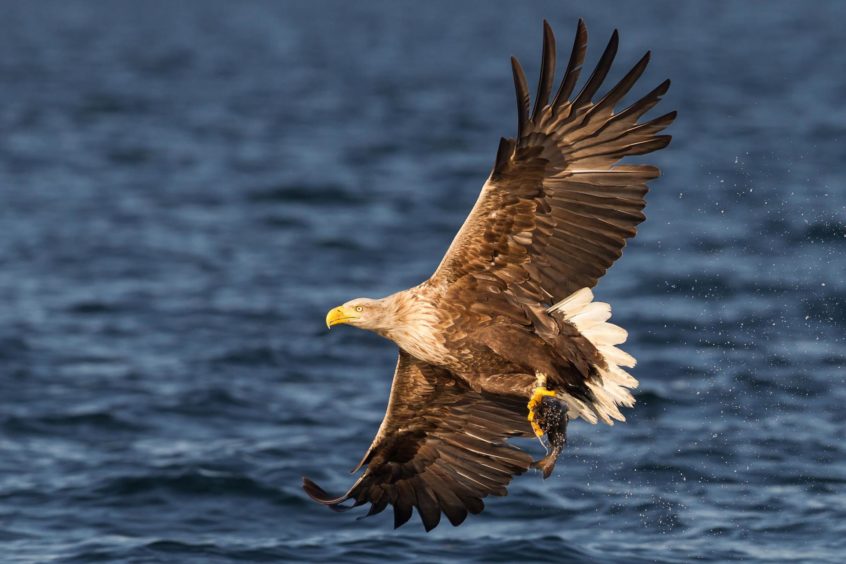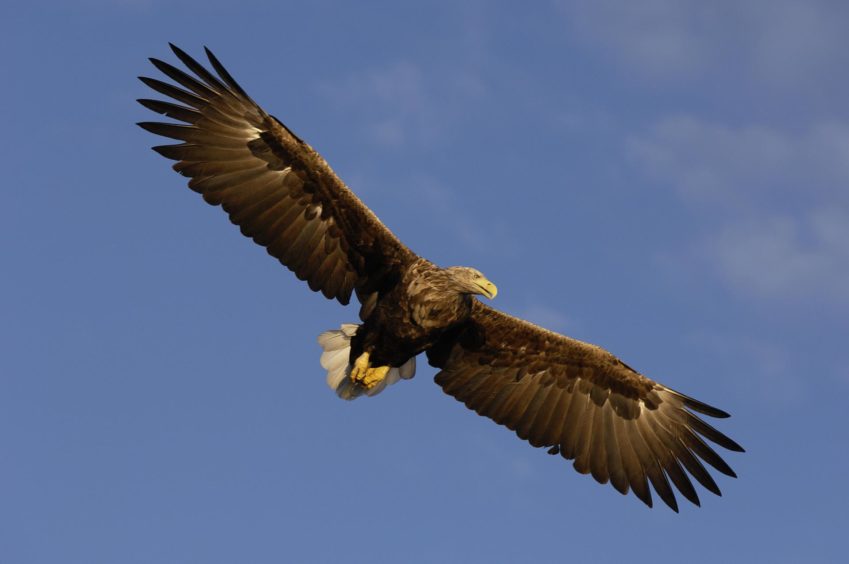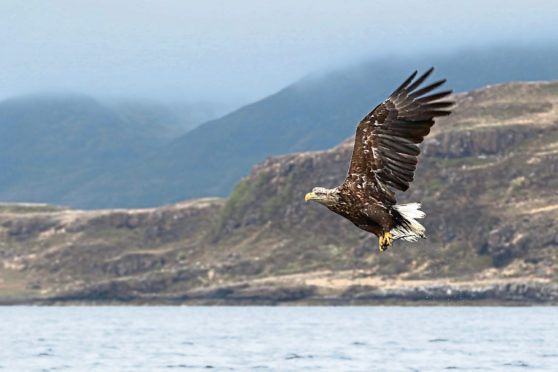The drizzle pit-pattered the calm surface of Loch Sligachan on Skye and out on the water a red-breasted merganser roll-dived in its constant quest for fish.
Despite the boggy path that clawed at my boots, it had been a good morning, the highlight being a group of harbour seals resting on the seaweed-slithered rocks. A couple of the seals took to the water, and then continually arc-jumped like porpoises as they made their way along the shore at some speed.
Why were they behaving in this way? I might be wrong, but I reckon they were ‘porpoising’ for fun. Having a lark is not confined to just humankind, for many other creatures have the same capacity to enjoy.
Then, a large brown bird stirred by the shore edge, taking to the wing on broad lumbering wings, followed by another. A pair of sea eagles! They rose to a low height above the water, and one turned over onto its side, grappling talons briefly with the other eagle, before resuming normal flight once more and disappearing behind a hill spur.
The birds were an adult male and female, their distinctive white tails briefly glinting, despite the dreich light. It was a wonderful sight, but not an unusual one on Skye, for I had seen sea eagles every day that previous week. At Waternish and at Dunvegan, and several other places too, these magnificent birds of prey had soared above me on their impressively large ‘barn-door’ wings. Indeed, I was seeing many more sea eagles than golden eagles.

One reason for this is that sea eagles are much more tolerant of people than golden eagles, and on several occasions, I even observed them swooping low over houses and crofts.
Also known as the white-tailed eagle, these wonderful birds were persecuted to extinction in Scotland by the beginning of the 20th century. A pioneering reintroduction scheme began in 1975 with eaglets being released on Rum in the Inner Hebrides. The first successful breeding took place in 1985. Further releases in the 1990s in Wester Ross ensured that the population became self-sustaining. A follow-up reintroduction scheme on the east of Scotland has also taken place, with these birds now slowly becoming established. Today there are over 100 breeding pairs in Scotland.

The wonderful spin-off these Skye sea eagles brought was the manner in which visitors to the island were so enthralled by their presence. In essence, they were a tourist attraction helping to boost the local economy. It is a concept I find appealing. Nature is, of course, the oxygen of life, but if it is also recognised as an economic asset that provides discernible benefit, then we are so much more likely to look after it.
Sea eagles are designed to impress, and these special birds are helping to connect humankind with the environment and its wild beating heart; and for me, that is truly priceless.
Info
Sea eagles have a varied diet, which includes carrion, seabirds, fish, and rabbits. The wing-span is up to eight feet.
